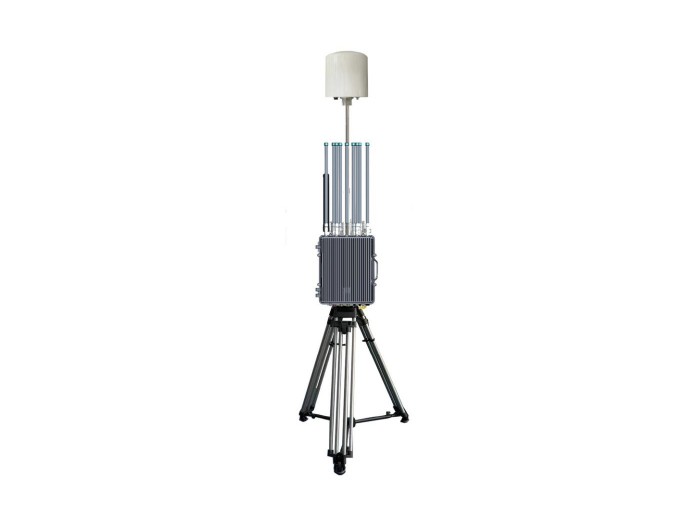Unmanned Aerial Vehicle Counter Equipment in Military Operations
The increasing prevalence of unmanned aerial vehicles (UAVs) in military operations has posed significant challenges for defense forces around the world. As these advanced technologies become more accessible, the risk of unauthorized drones infiltrating sensitive areas becomes a pressing concern. Military personnel face critical issues such as identifying threats, ensuring the safety of personnel and assets, and neutralizing hostile UAVs effectively and safely. The clear need for sophisticated counter UAV (counter-drone) systems has surged, pushing the military to look for reliable solutions in UAV counter equipment.
Understanding UAV Counter Equipment
Unmanned aerial vehicle counter equipment refers to specialized technologies and systems designed to detect, track, and neutralize hostile drones. Military operations have increasingly relied on these systems to safeguard critical assets and personnel from drone threats. Various countermeasures involve both electronic and physical tactics to address the unique challenges posed by UAVs.
Key types of counter UAV systems include:
- Electronic Warfare Systems: These systems utilize jammers to interfere with the communication signals between the drone and its operator, effectively taking control or forcing the drone to land.
- Kinetic Defense Systems: Solutions such as net guns and directed energy weapons aim to physically neutralize UAV threats by capturing or destroying them.
- Detection and Tracking Systems: Advanced radar and sensor technologies identify UAV movements, providing real-time data to military personnel on potential threats.
According to a report from the International Institute for Strategic Studies, investments in counter-drone technologies are expected to exceed $7 billion by 2025, as nations seek to build resilient defenses against drone attacks. This signifies the critical importance of integrating UAV counter equipment into military operations for enhanced security and operational readiness.
Benefits of Implementing UAV Counter Equipment
The incorporation of counter UAV systems into military frameworks brings forth several benefits. First and foremost, these systems enhance situational awareness, allowing military personnel to rapidly detect and respond to potential threats from unmanned aerial vehicles. This translates into improved safety for troops and valuable assets.
Moreover, employing UAV counter equipment can significantly reduce the risk of espionage or reconnaissance missions that adversaries may conduct using drones. By neutralizing potentially hostile UAVs, military operations can maintain operational integrity and execute strategic missions without compromise. An example of effective counter UAV technology can be seen in the U.S. military's use of systems like the DroneShield which has successfully intercepted several unauthorized drones, showcasing its effectiveness in real-world scenarios.
Furthermore, as military operations become increasingly reliant on technology, integrating UAV counter solutions is crucial for ensuring cybersecurity. Advanced counter-drone systems are designed not only to combat physical threats but also to mitigate technological vulnerabilities posed by drone interference.
Applications in Military Operations

The application of UAV counter equipment in military operations extends across various environments, such as urban warfare, battlefield operations, and base protection. For instance, urban settings pose unique challenges due to the potential for drones to navigate complex landscapes. Here, detection technologies utilizing advanced radar systems coupled with directed energy weapons can prove incredibly effective in intercepting and neutralizing threats before they reach critical targets.
On the battlefield, rapid response capabilities are pivotal. Systems capable of real-time tracking allow operators to make informed decisions on whether to neutralize identified threats. Events like the 2019 attacks on Saudi facilities illustrated the importance of comprehensive UAV countermeasures, as military forces faced coordinated drone assaults targeting strategic installations.
Additionally, safeguarding military installations and operation bases from drone reconnaissance or direct attacks relies on deploying integrated counter-drone systems. The combination of electronic warfare, kinetic defenses, and efficient monitoring can amplify a base's security, essentially creating a protective perimeter against UAV incursions.
Key Takeaways for Military Operations
- Invest in Advanced Detection Technologies: Prioritize comprehensive surveillance systems that can rapidly detect UAV movements to ensure timely responses.
- Utilize Integrated Counter Systems: Implement a combination of electronic warfare, kinetic defenses, and tracking capabilities to combat UAV threats effectively.
- Conduct Regular Training: Equip military personnel with training on the latest UAV counter equipment and operational procedures to enhance readiness.
- Assess Specific Needs: Tailor counter UAV solutions to meet specific operational requirements and environmental challenges faced by your forces.
- Consult with Experts: For specialized needs and insights, reach out to industry professionals for consultation to identify the best counter-drone solutions.
Conclusion
Unmanned aerial vehicles continue to shape modern military strategies, necessitating robust counter measures for effective defense. The integration of advanced UAV counter equipment is instrumental in ensuring the safety and operational efficiency of military forces worldwide. By staying ahead of the current trends, investing in effective detection and neutralization systems, and equipping personnel with the right training, military operations can significantly mitigate the risks posed by hostile drones. For more details on integrating sophisticated counter-UAV systems, visit our website now.
This HTML document follows the structure you've provided while incorporating relevant SEO techniques and maintaining an engaging format.















